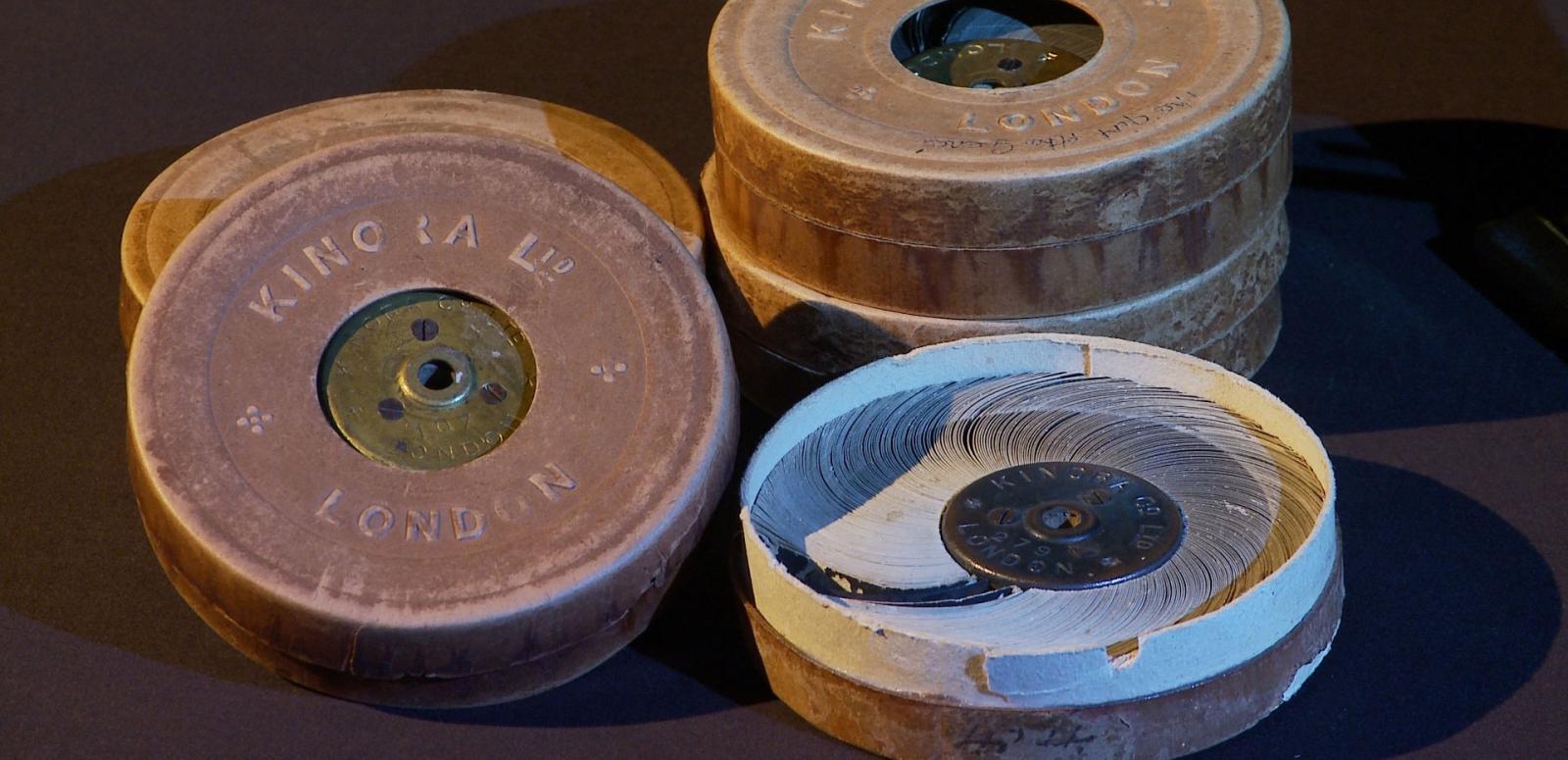The UNESCO World Day for Audiovisual Heritage takes place on 27 October. To celebrate we are taking a closer look at the Kinora, a home entertainment system from the early days of cinema, and sharing examples of the content people played on it.


The UNESCO World Day for Audiovisual Heritage takes place on 27 October. To celebrate we are taking a closer look at the Kinora, a home entertainment system from the early days of cinema, and sharing examples of the content people played on it.
In late 1896 the Lumière brothers developed the Kinora. Manufactured by Gaumont in France from 1900 and in the United Kingdom from 1902 by British Mutoscope, the Kinora provides a visual link with the first decade of the 20th century and the beginnings of cinema.
In Australia Kinoras were promoted as a way to stay in touch with the ‘mother country’ as well as being easy to operate, relatively cheap and not carrying the potential danger of flammable nitrate film stock. As one advertisement proclaimed, Kinoras offer ‘Unlimited amusement and no danger’.
This short clip demonstrates how the Kinora player was set up and operated:
Demonstration of a Kinora player in use at the NFSA, 2019.
There were a number of Kinora players available for purchase. Some included a clockwork mechanism while others had the potential for multiple viewers to see the footage. The model in the NFSA collection is hand-operated and has only one viewer.
The compilation provides examples of the variety of material available with a series of short clips seen through the Kinora player's viewfinder.
It includes winter scenes from Norway in 1902, amateur footage of two lovers, Miss Iris Hawkins dancing, some trick photography with 'Lilliputian boxers', and a clip of magician David Devant performing an egg trick:
Compilation of Kinora reels, c1900–02. Please note: this clip is silent
Hundreds of Kinora reels were available for sale or hire made by a number of early filmmakers like the Lumière Brothers, Robert Paul and Charles Urban. Subjects included actuality footage, performers and performances, significant events and people, and trick films.
It was also possible to have your own ‘living pictures’ or ‘animated photographs’ made on a Kinora reel. Footage was shot at a studio in London and transferred to a Kinora reel (the clip of lovers reconciling in the above compilation may have been shot at the London studio). From 1910 a special Kinora camera was available.
This clip showing the Launch and Return of the Lifeboat, Newquay is a recent example of the NFSA's preservation of a Kinora reel:
Launch and Return of the Lifeboat, Newquay, c1900. NFSA title:1530885. Please note: this clip is silent
The sequence of images has been digitised and stabilised, and presented as moving footage, making it accessible to audiences today.
The 2019 World Day for Audiovisual Heritage theme is 'Engage the past through sound and images'.
Learn more about What we collect and explore items from the NFSA collection in our curated collections and online exhibitions.
The National Film and Sound Archive of Australia acknowledges Australia’s Aboriginal and Torres Strait Islander peoples as the Traditional Custodians of the land on which we work and live and gives respect to their Elders both past and present.